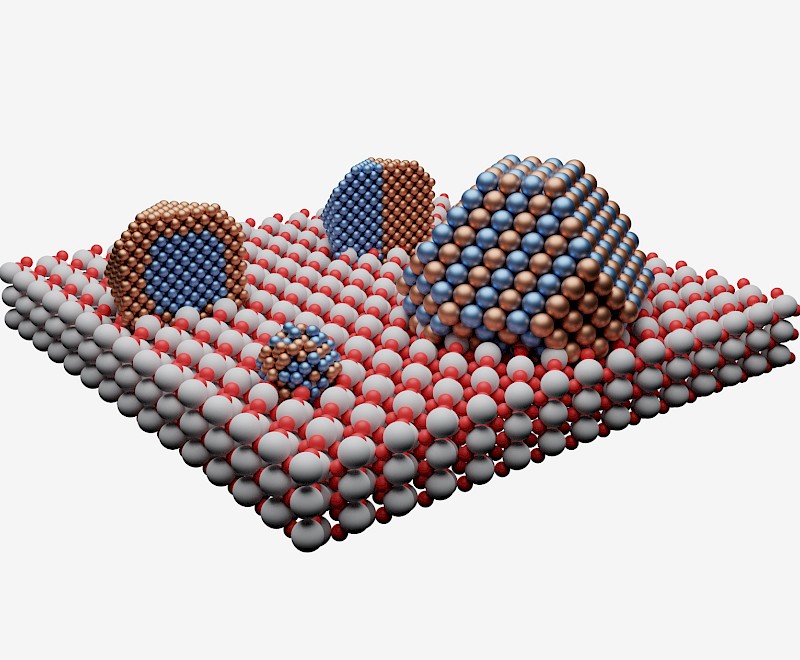
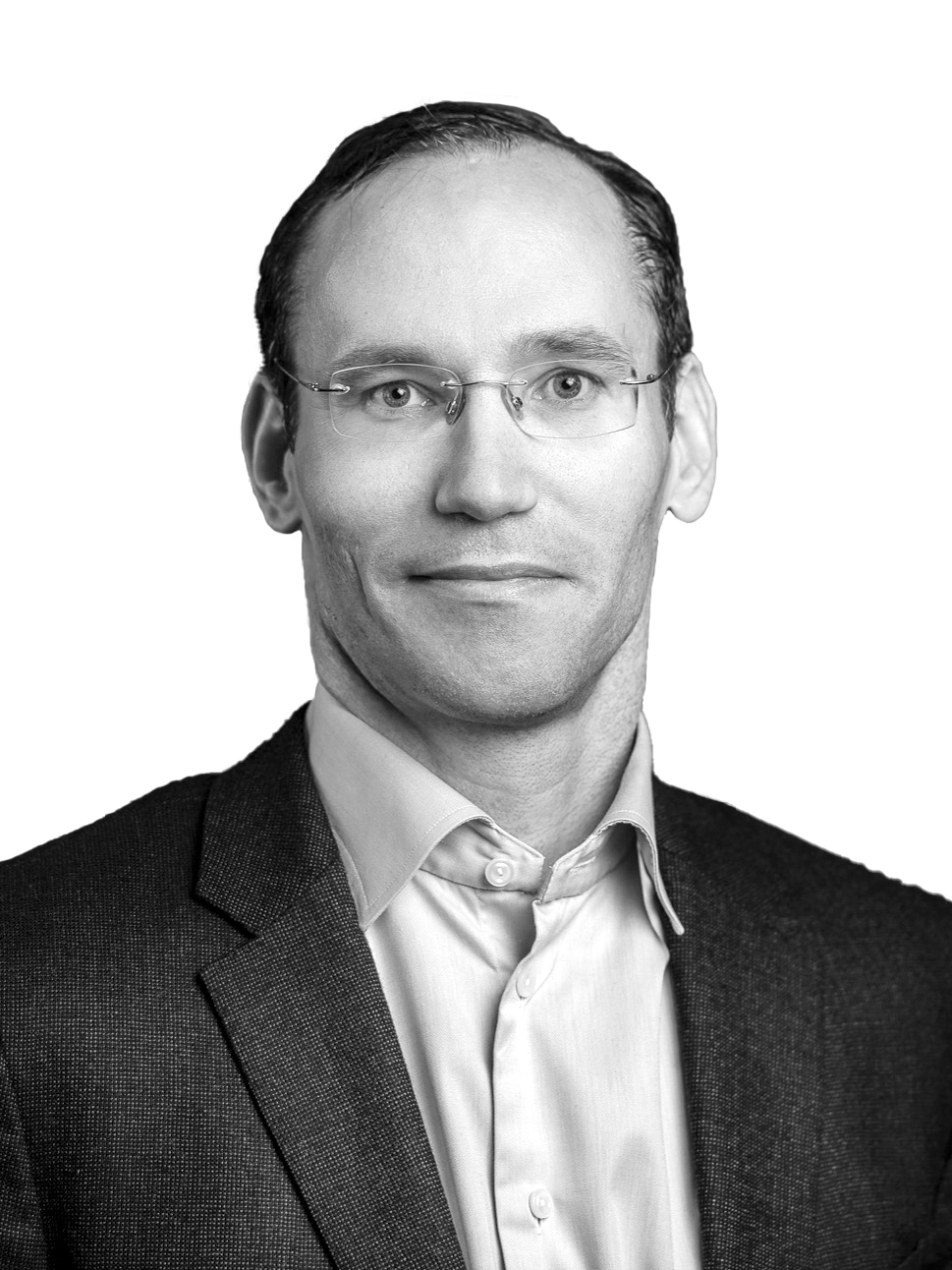
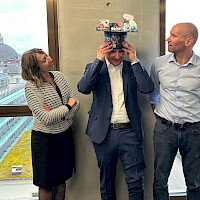
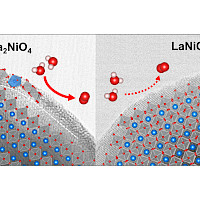
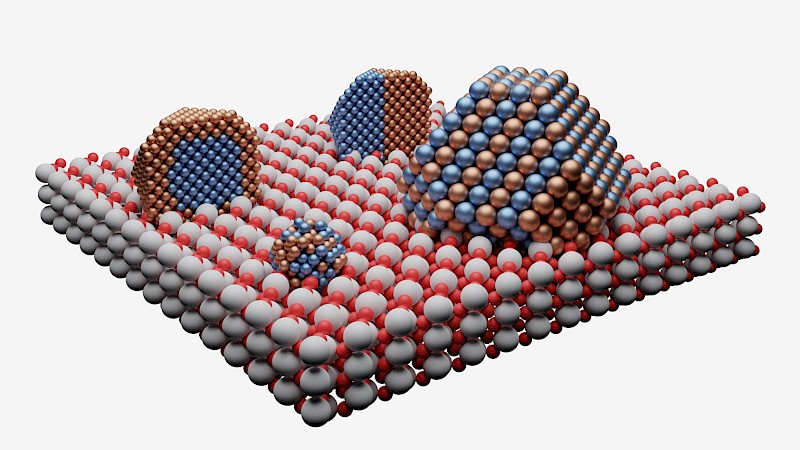
Research activities in the Laboratory of Energy Science and Engineering (LESE) address the important challenges of producing fuels, electricity and chemicals in efficient and sustainable ways through fundamental understanding gained from laboratory-scale experiments and mathematical modelling.
Our research is centered around the following three pillars:
- Carbon dioxide (CO2) capture
- Heterogeneous catalysis
- Physics of single- and multiphase particle flows
Carbon dioxide capture and storage (CCS) comprises a set of techniques to mitigate climate change by removing CO2 from flue gas streams or the atmosphere followed by its underground storage. At LESE, we focus on the exploration of solid sorbents for CO2 capture, such as CaO or MgO that possess high theoretical CO2 uptake capacities. Yet, such sorbents often suffer from a poor long-term stability and/or slow CO2 sorption kinetics. Hence, work at LESE aims to advance the formulation of CO2 sorbents by obtaining a fundamental understanding of the underlying CO2 capture, regeneration and deactivation pathways, hence avoiding cumbersome trial-and-error approaches. To this end, LESE interrogates the structure and morphology of model sorbents (such as single crystals or films) under working conditions using an arsenal of characterization techniques including X-ray diffraction (XRD), X-ray absorption spectroscopy (XAS), Raman spectroscopy, infra-red and nuclear magnetic resonance (NMR) spectroscopy, and electron microscopy.
In view of global sustainability ambitions, catalysis is a critical technology for achieving net-zero emission targets. At LESE, we are researching heterogeneous catalysis (both thermal and electro) for key reactions including the hydrogenation of CO2 to methanol, the dry reforming of methane to a synthesis gas, propane dehydrogenation to propylene, and the oxygen evolution reaction. The major objective of our research in catalysis is the identification of structure-performance relationships in order to provide robust guidelines for advancing catalyst formulations, improving thereby their activity, selectivity and/or stability. To achieve this goal, we develop model catalysts of well-controlled size, morphology and composition using e.g. colloidal, nanoparticles, thin film or atomic layer deposition (ALD) techniques, and subsequently characterize their geometric and electronic structure by a series of complementary experimental techniques, e.g. XRD, pair distribution function (PDF) analysis, XAS, X-ray photoelectron spectroscopy (XPS), and environmental electron microscopy, when feasible under operando (or in situ) conditions.
Many chemical (conversion) processes rely on particulate systems, such as adsorbers or catalytic units. Although employed industrially for a long time, particulate flows (sometimes also referred to as granular flows) are only poorly understood, largely as their opacity makes it inherently difficult to acquire experimental data in a non-intrusive fashion. To advance this field, LESE, in collaboration with Prof. Prüssmann (Department of Electrical Engineering, ETH Zürich), is developing and applying magnetic resonance imaging (MRI) techniques to probe particulate flows. These efforts are complemented by high-speed imaging. Further, we are developing numerical codes to model single- and two-phase granular systems with a specific focus on non-spherical particles and integrating heat and mass transfer.
To cover the different aspects of our interdisciplinary research, we bring together researchers of complementary expertise and skills, and we are very proud to have a team with very diverse academic backgrounds including mechanical and chemical engineering, material science, chemistry and physics.